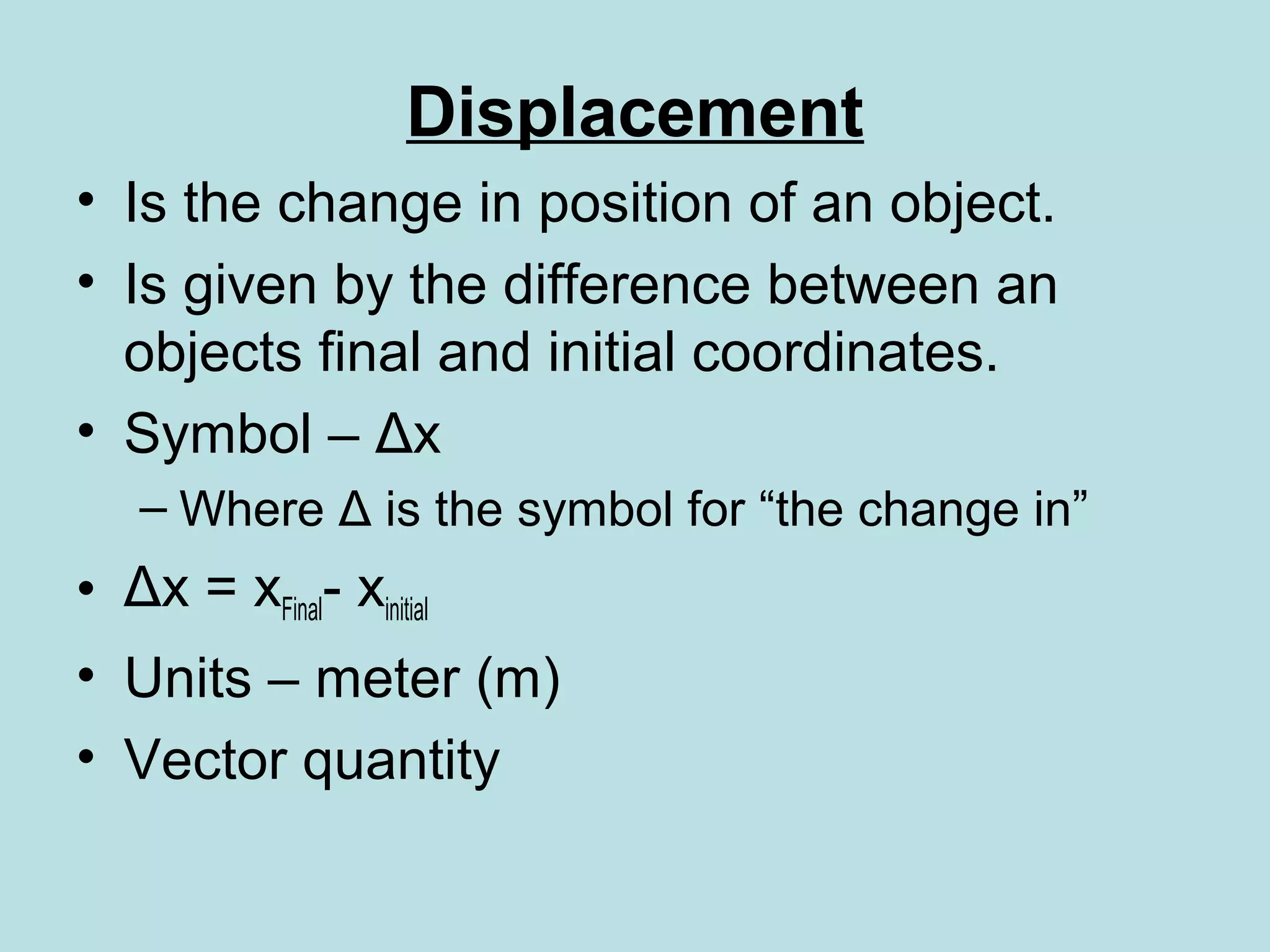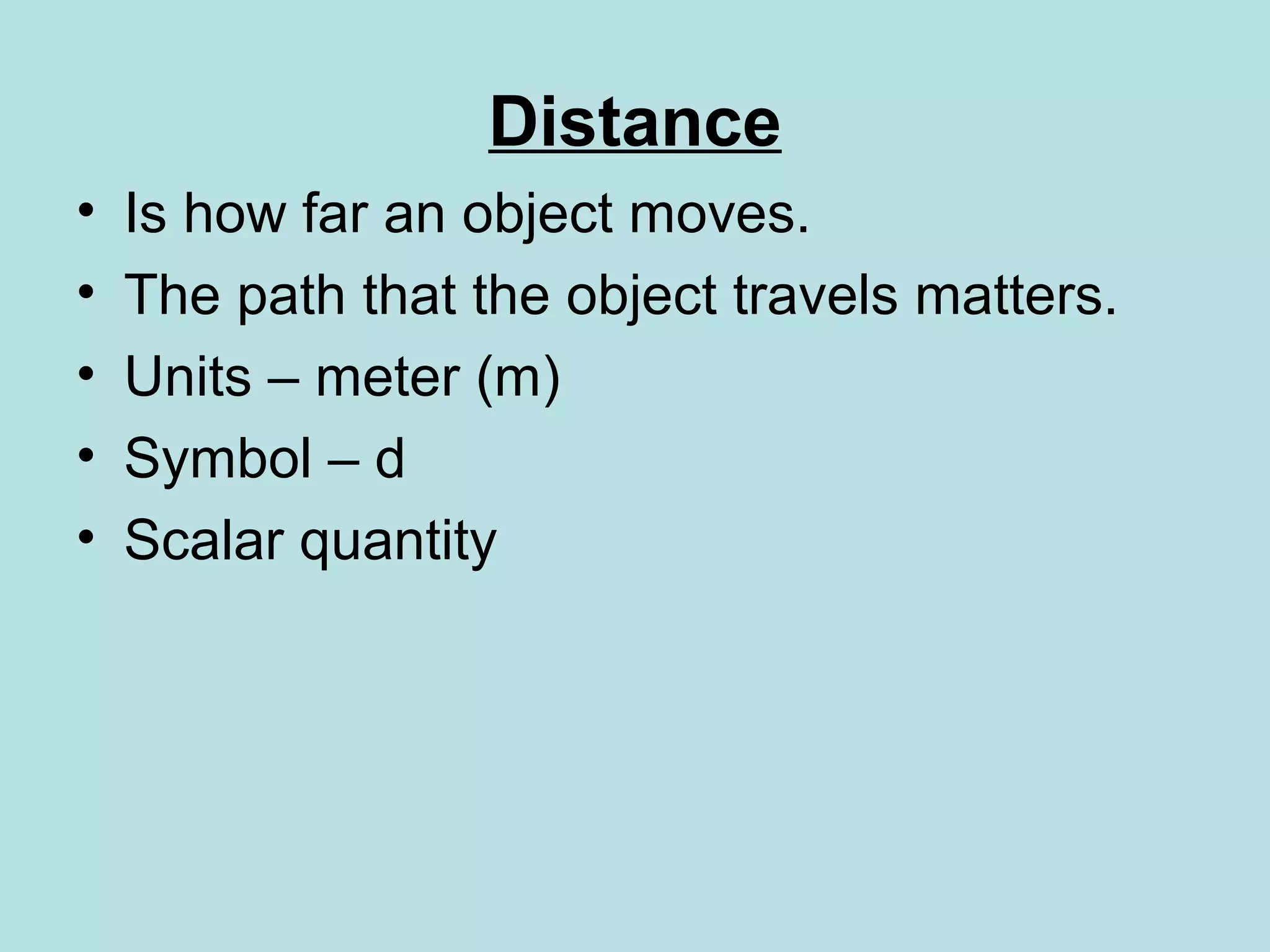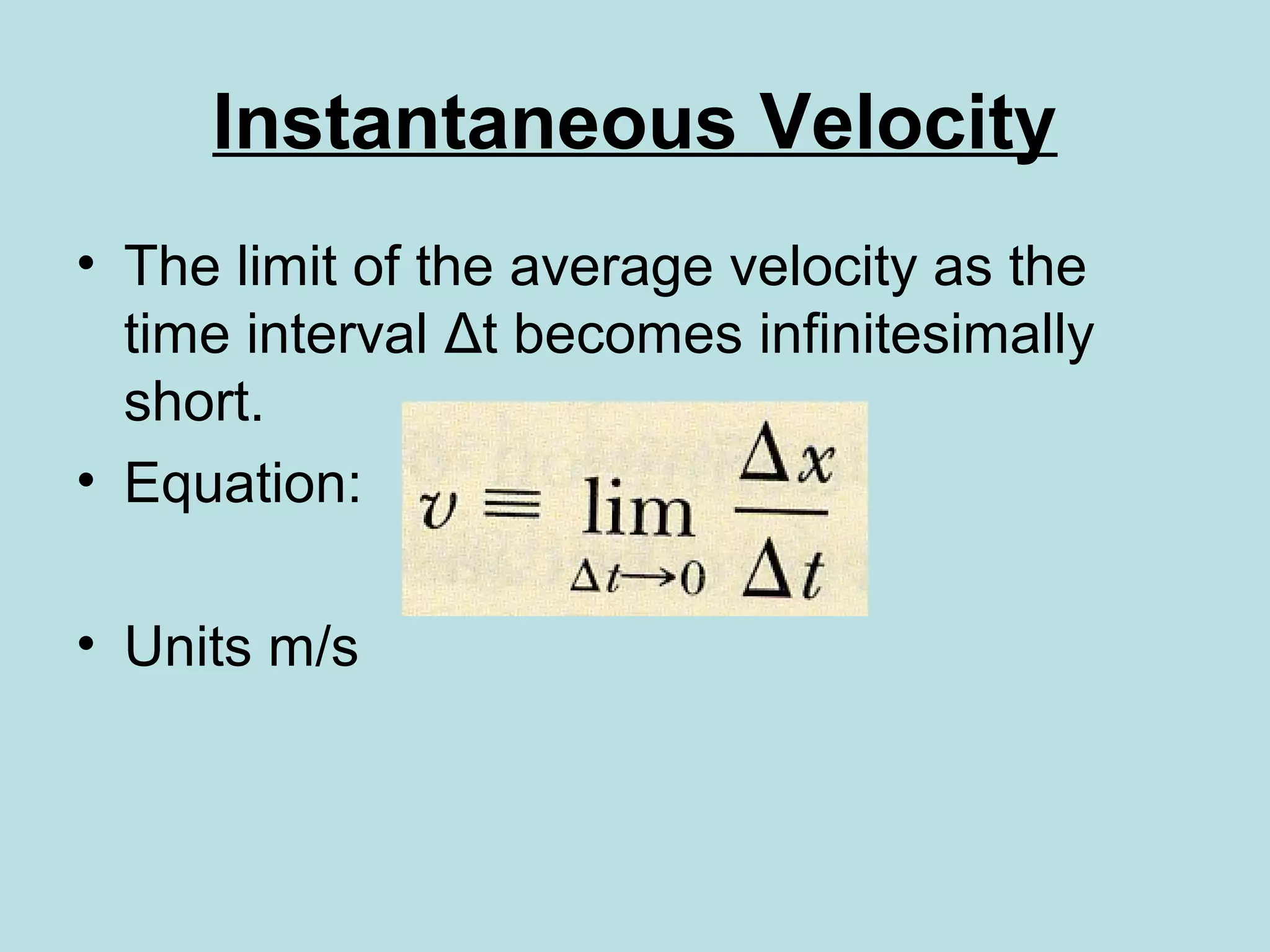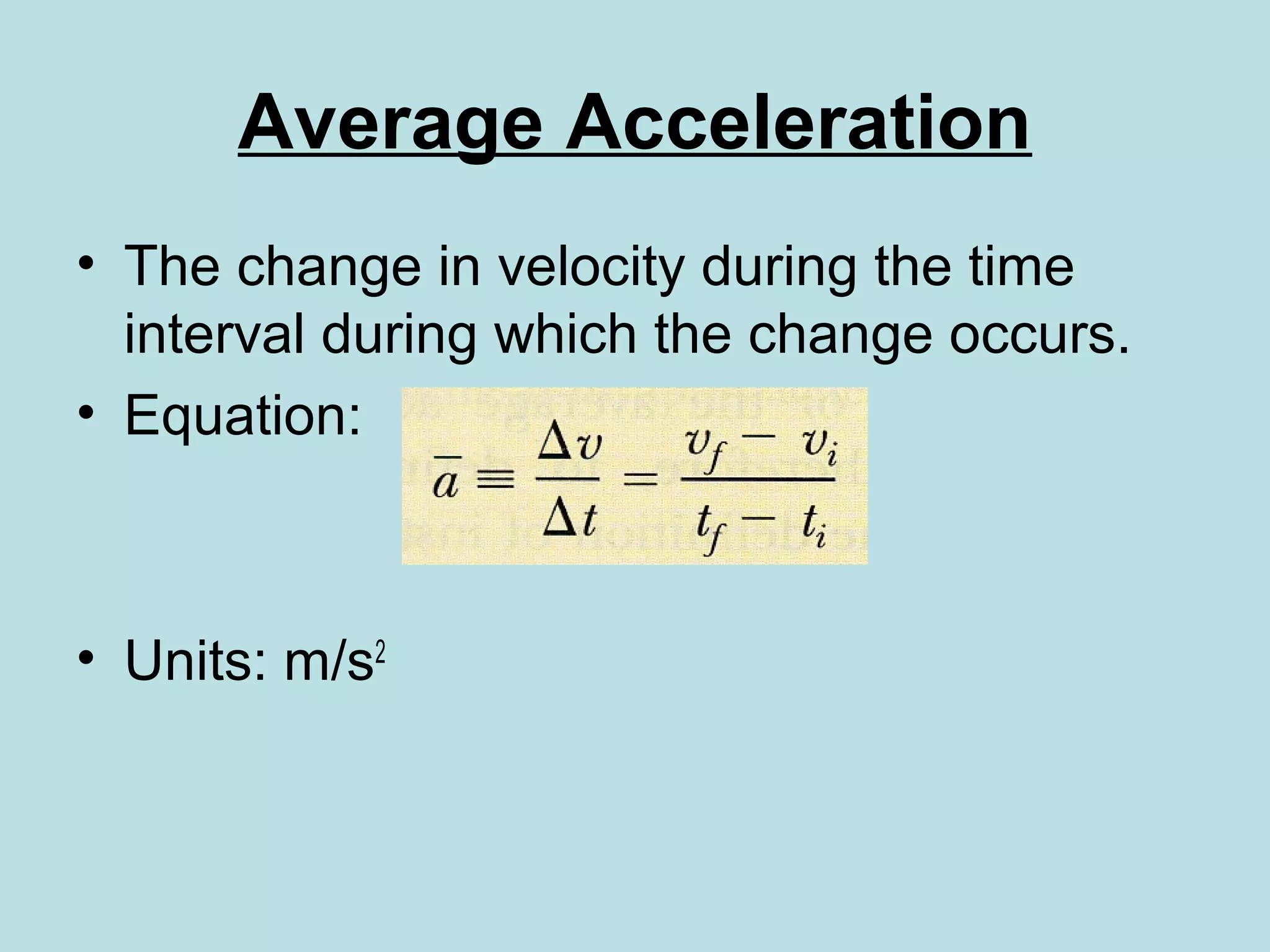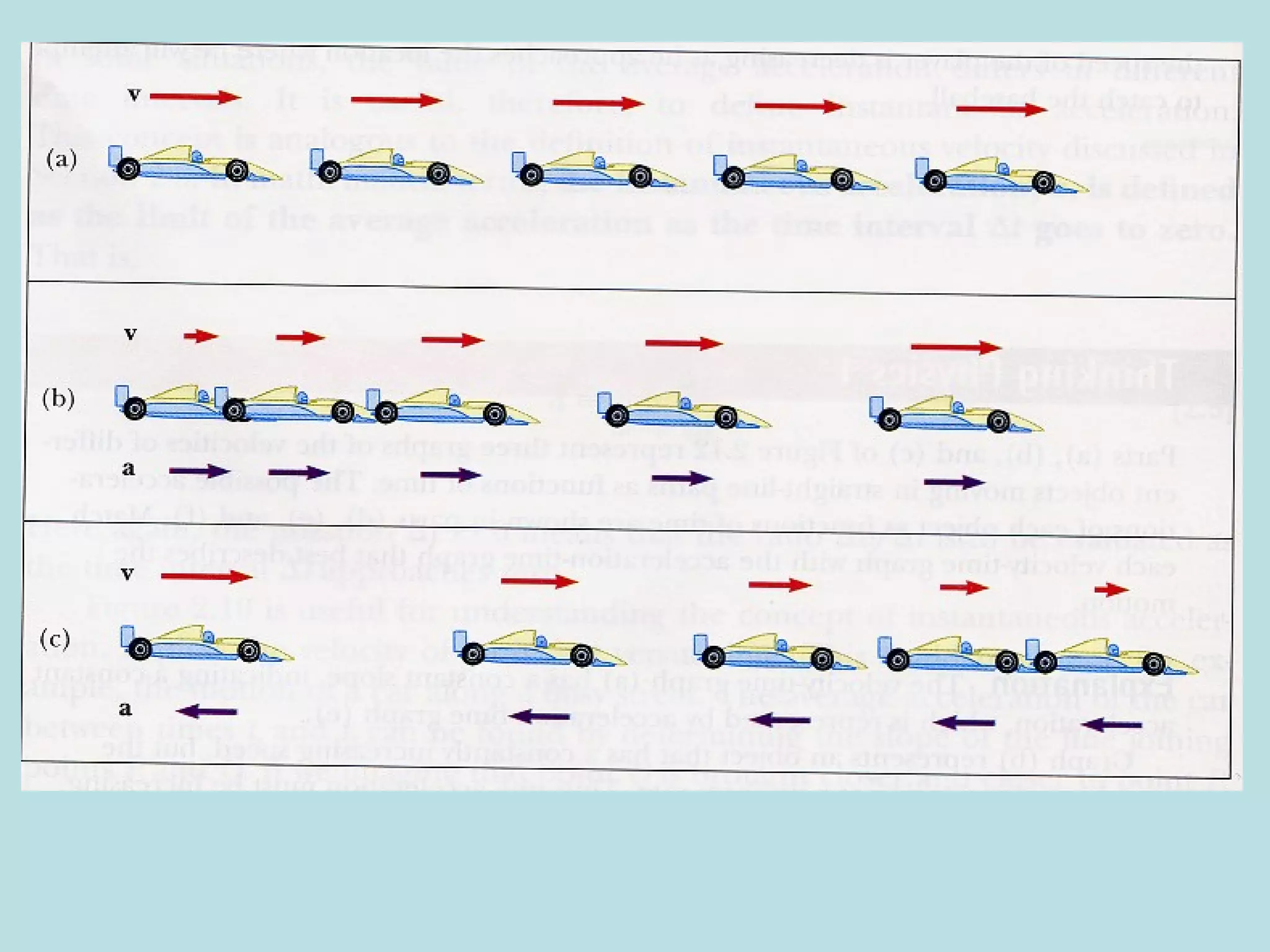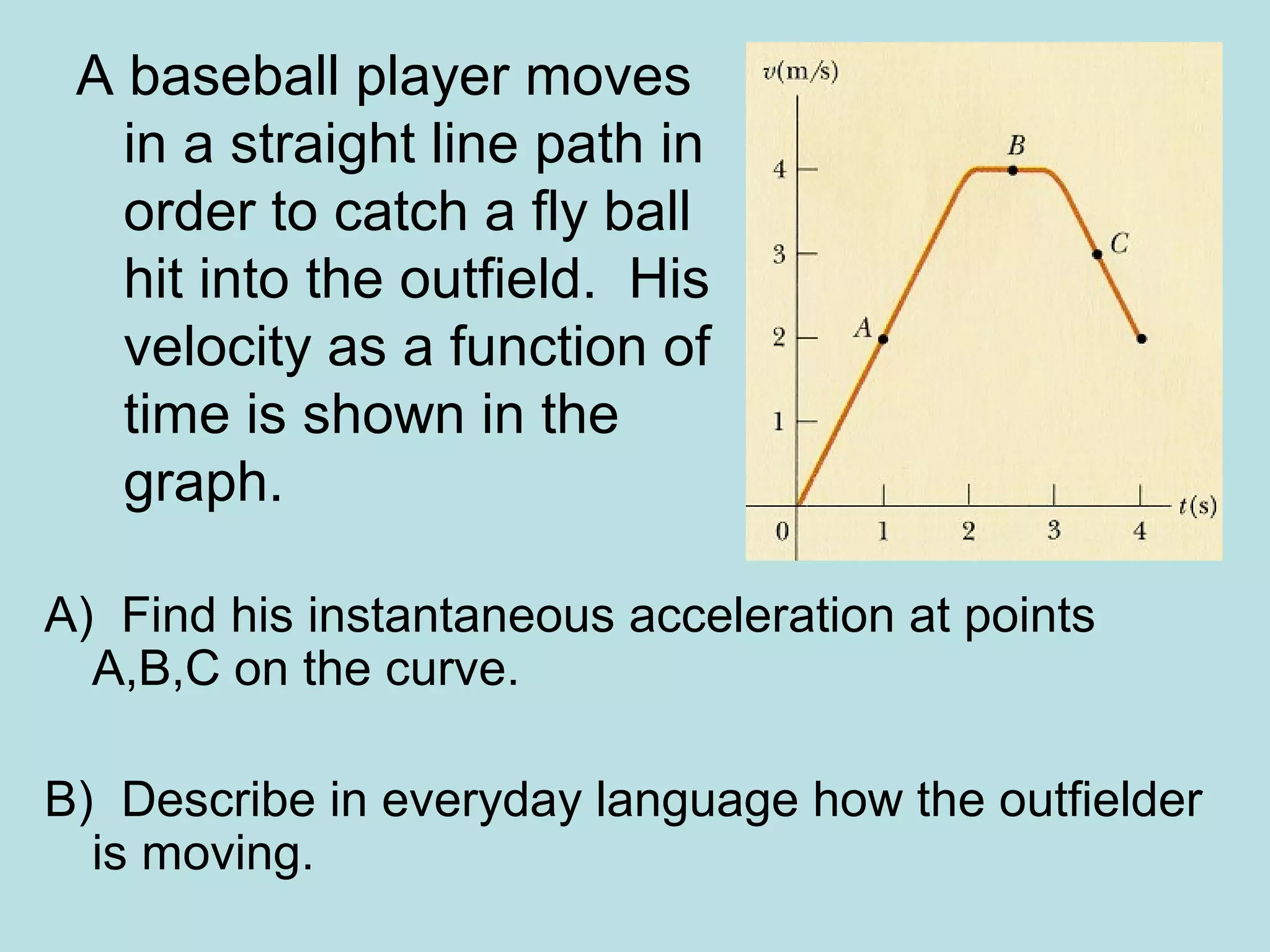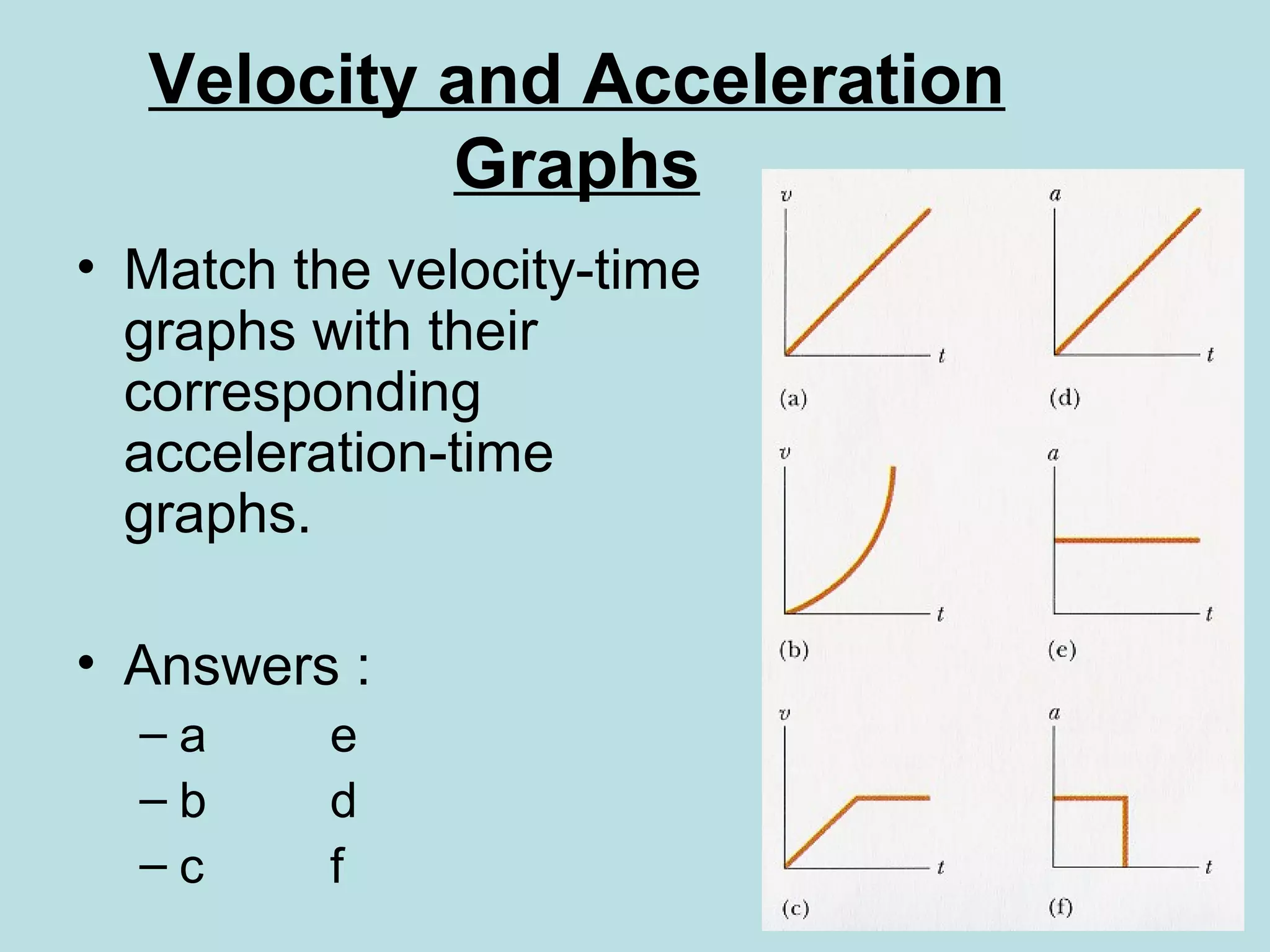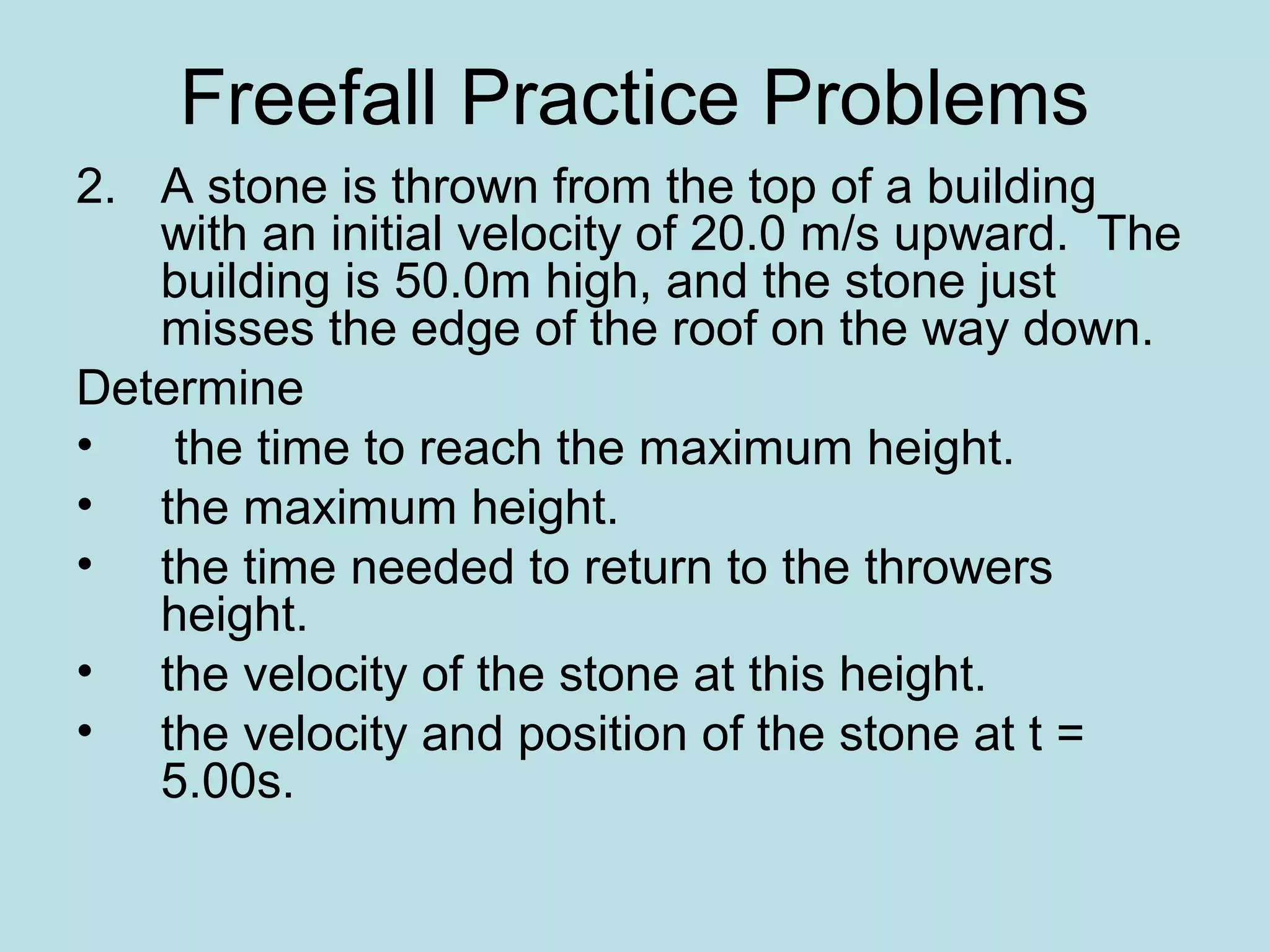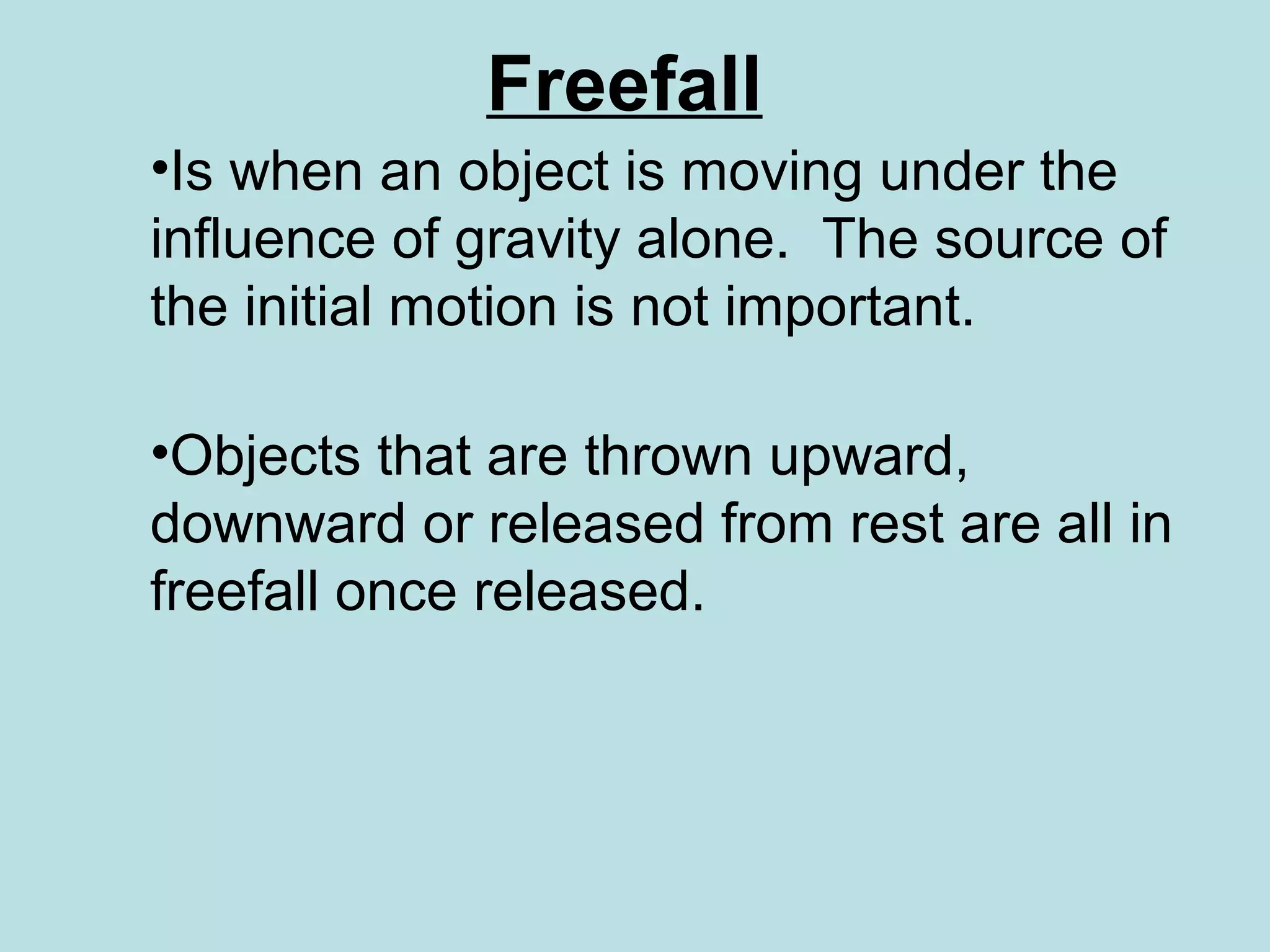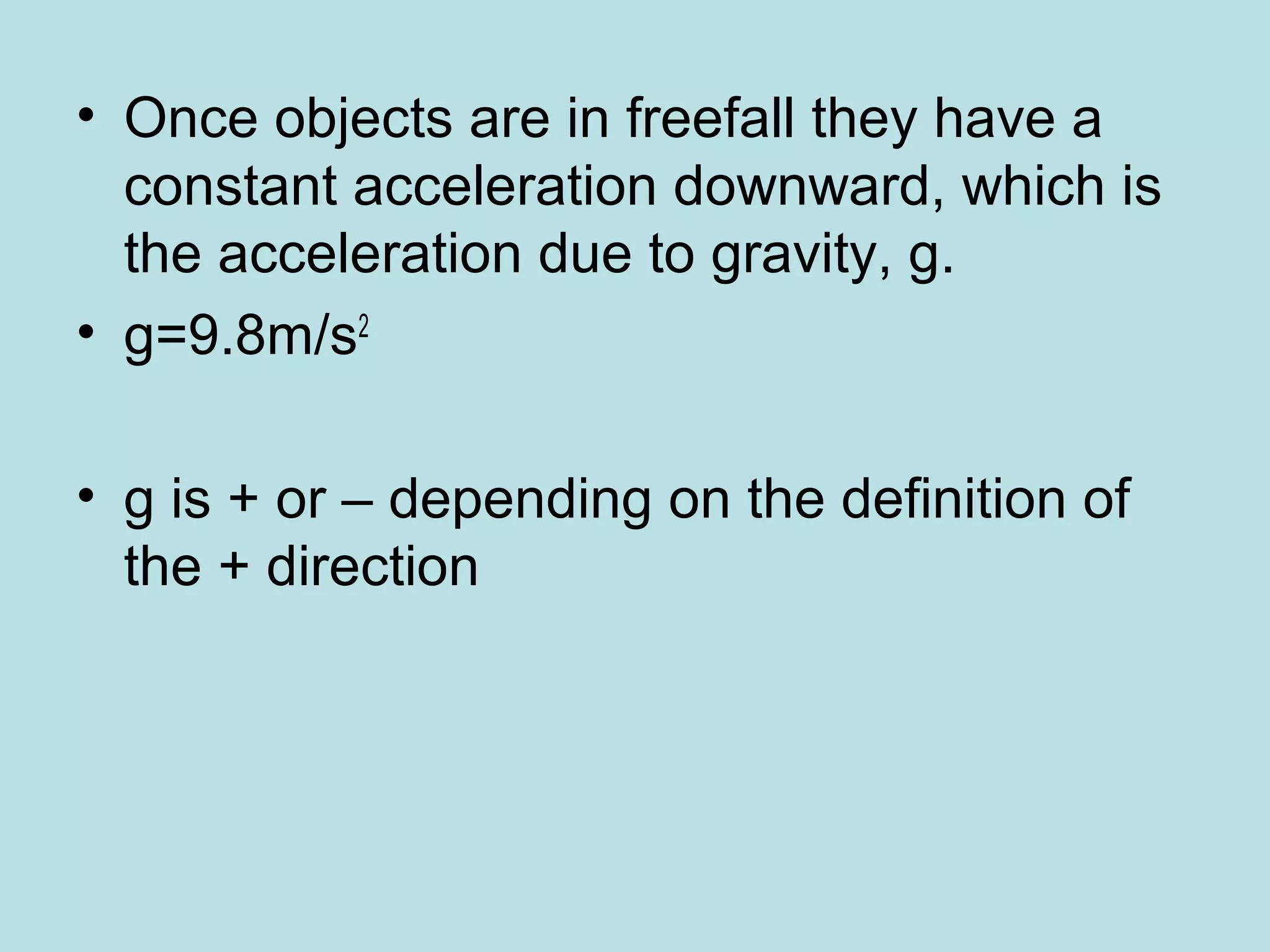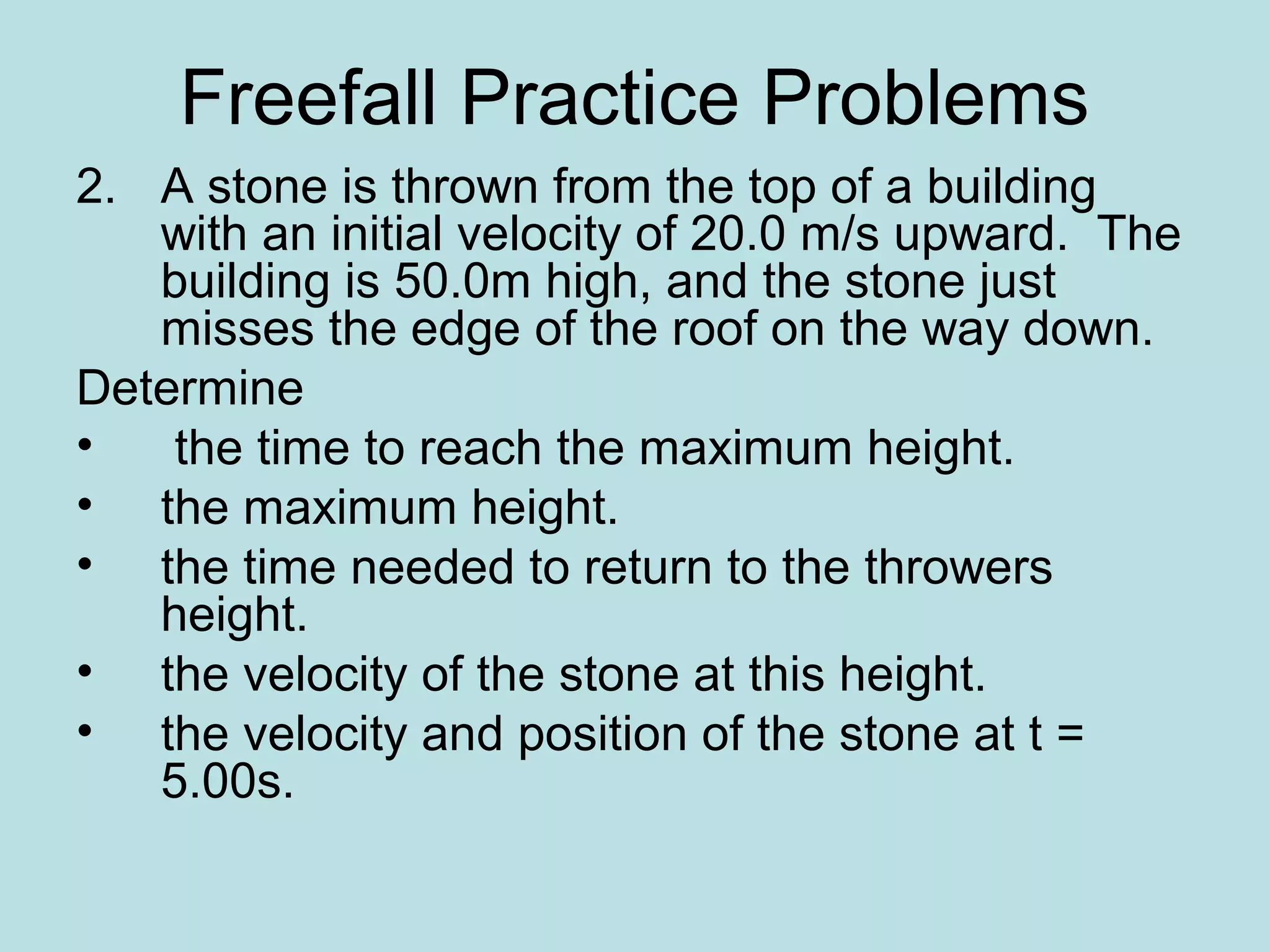This document defines key concepts related to motion in one dimension, including scalar and vector quantities, displacement, distance, velocity, acceleration, and free fall. Displacement is a vector quantity that describes the change in an object's position, while distance is a scalar quantity referring to how far an object moves. Velocity and acceleration can be average or instantaneous, and their relationships as well as graphical representations are explained. Free fall describes the motion of objects under the influence of gravity alone. Practice problems apply these concepts to real-world scenarios.


